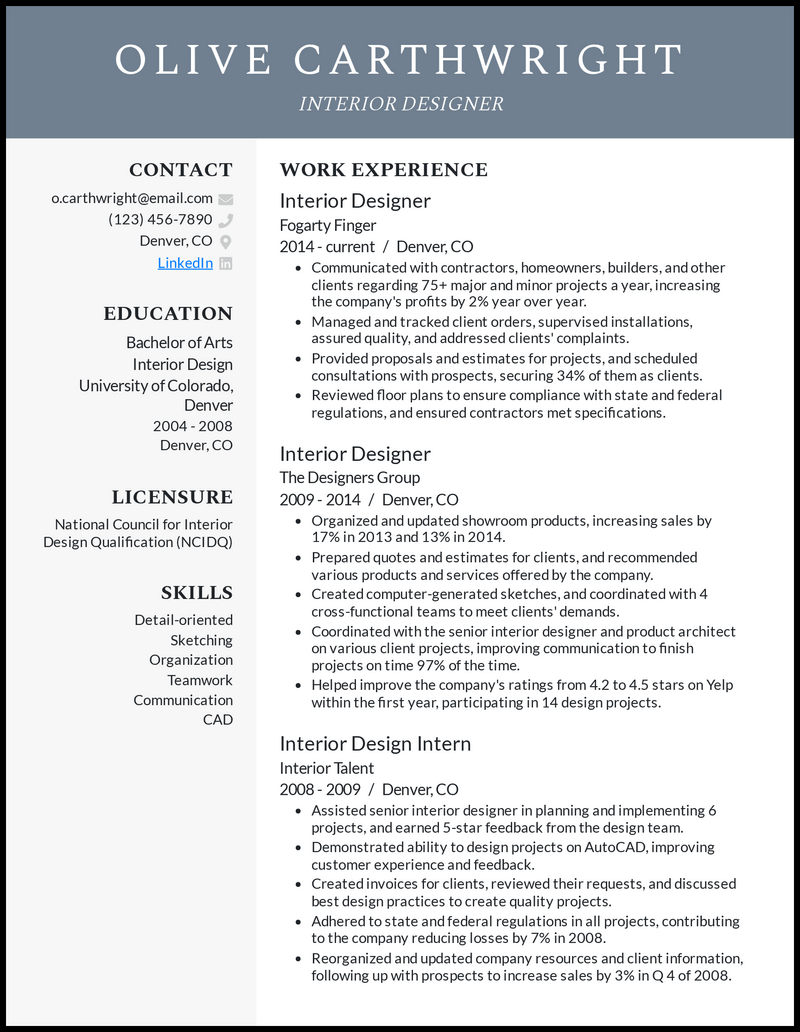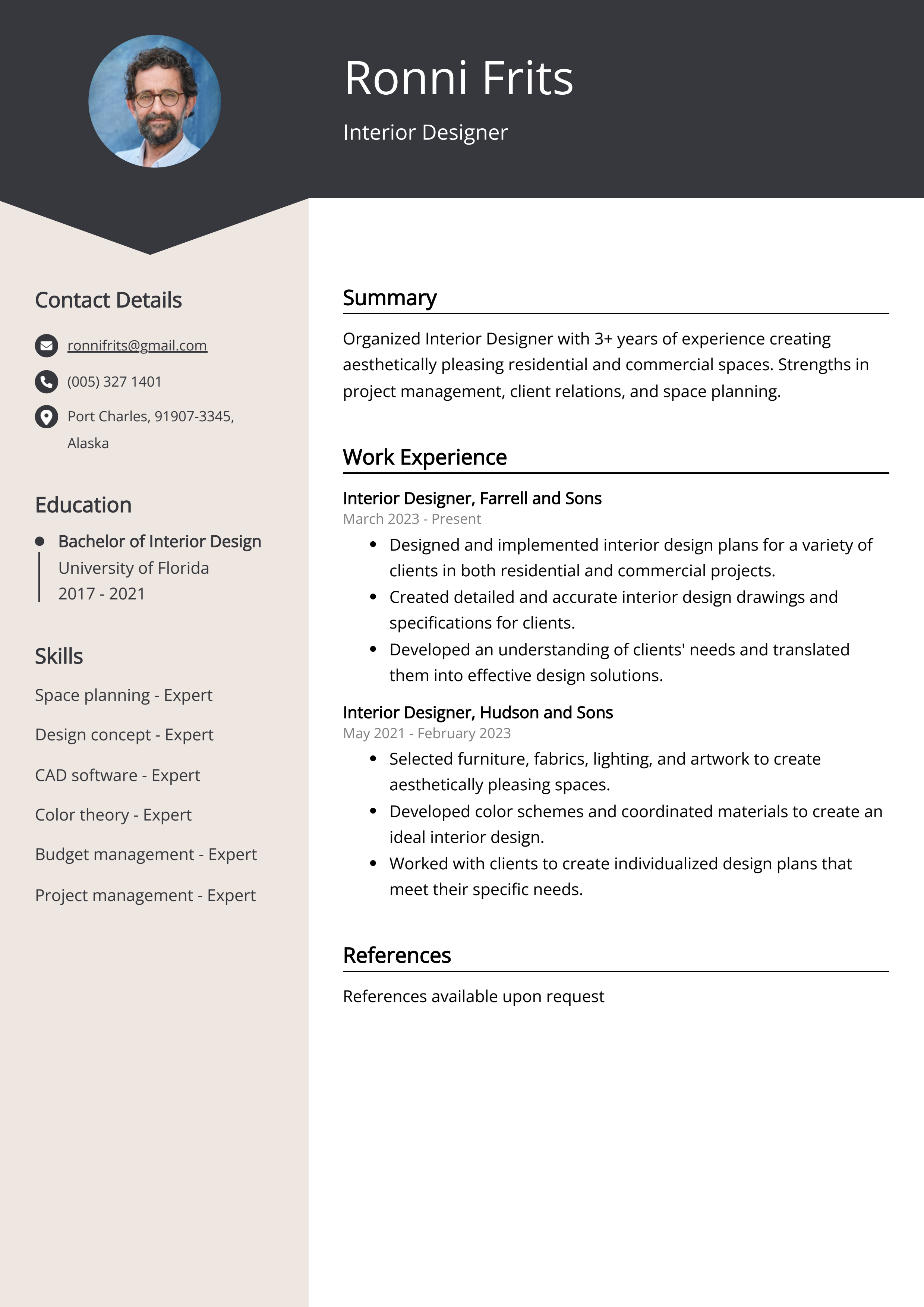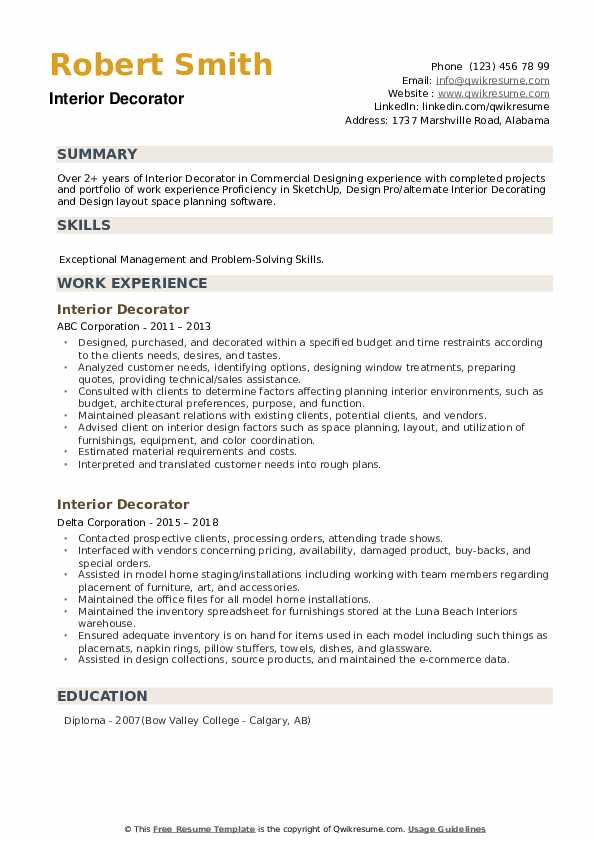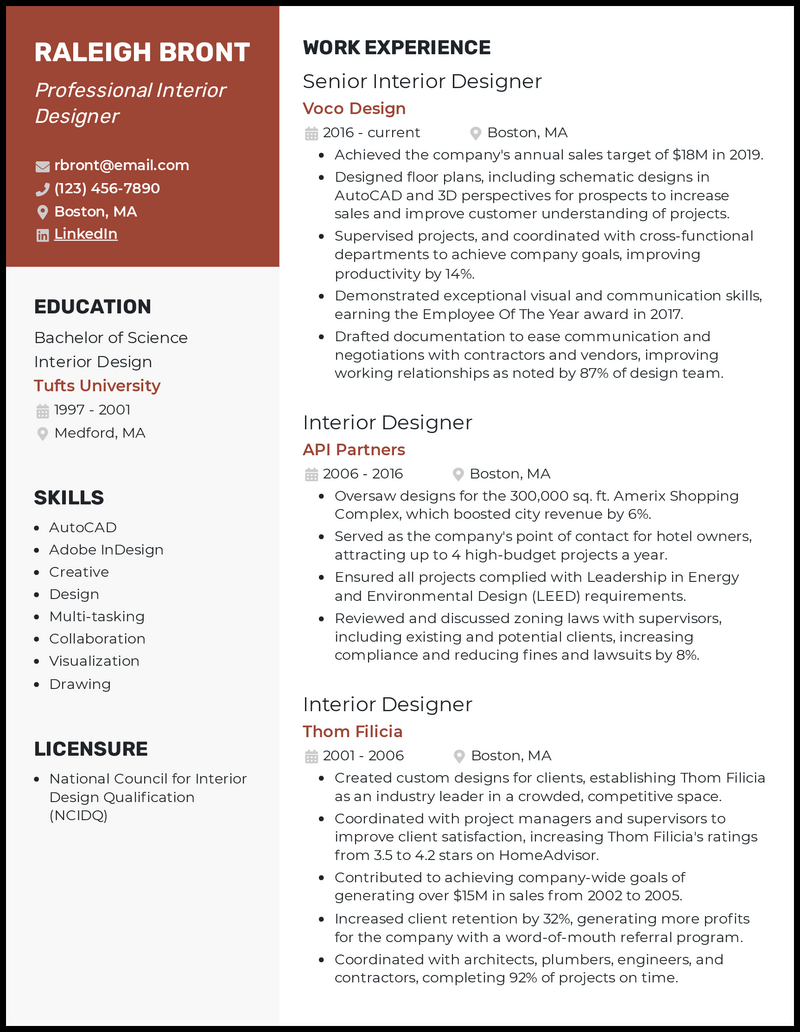Are you an aspiring interior decorator looking to make your mark in the vibrant world of design? An impressive resume is your first step toward that dream job. In this comprehensive guide, we’ll explore everything you need to know about creating an outstanding interior decorator resume that not only showcases your skills and experience but also reflects your unique style and personality.
Understanding the Role of an Interior Decorator
Before diving into resume specifics, it’s crucial to understand what an interior decorator does. Unlike interior designers, who often work on structural changes, decorators focus on enhancing the aesthetics of a space. They utilize colors, textures, furniture, and accessories to create visually appealing environments.
Key Responsibilities of an Interior Decorator
- Assessing client needs and preferences
- Creating design concepts and mood boards
- Selecting color palettes and materials
- Shopping for furnishings and décor
- Coordinating with contractors and vendors
- Staging spaces for events
Key Elements of an Interior Decorator Resume
Your resume should be a reflection of not just your skills, but also your creativity and attention to detail. Here are the critical sections you should include:
1. Contact Information
Your contact information is the first thing potential employers will see. Ensure it includes:
- Full Name
- Email Address
- Phone Number
- LinkedIn Profile (if applicable)
- Website or Portfolio Link
2. Professional Summary
This section should be a brief overview (2-3 sentences) of your experience and design philosophy. For example:
“Creative and detail-oriented interior decorator with over 5 years of experience in residential design. Passionate about creating unique spaces that reflect the personality of my clients while ensuring functionality and aesthetic appeal.”

3. Skills Section
Highlight your top skills relevant to interior decorating. This can include:
- Color Theory
- Space Planning
- Textiles and Materials
- Adobe Creative Suite
- Project Management
- Client Communication
Example Skills Section
| Skill | Proficiency Level |
|---|---|
| Color Theory | Expert |
| Space Planning | Advanced |
| Client Communication | Expert |

4. Work Experience
Your work experience should detail your previous roles. Use bullet points to describe your responsibilities and achievements. Start with your most recent job and work backwards.
Example Work Experience Entry
Interior Decorator | XYZ Interiors | June 2018 – Present
- Designed and executed over 30 residential projects, enhancing client satisfaction by 25%.
- Developed mood boards and design concepts tailored to client preferences.
- Collaborated with contractors to ensure timely completion of projects within budget.

5. Education
Include your degree(s) and relevant certifications. If you attended design-related courses, mention those as well.
Example Education Entry
Bachelor of Arts in Interior Design | University of Design | Graduated: 2017

6. Portfolio Link
Including a link to your online portfolio is critical. Make it stand out with a visually appealing layout that showcases your best work. Highlight diverse projects to demonstrate your range and versatility.
Tips for Writing an Interior Decorator Resume
Here are some practical tips to ensure your resume stands out:

1. Tailor Your Resume for Each Job Application
Customize your resume to match the specific requirements and keywords from the job description. This shows recruiters that you have taken the time to understand the role and its needs.
2. Use Action Verbs
Start bullet points with strong action verbs such as ‘designed’, ‘collaborated’, ‘developed’, and ‘executed’ to make your experience sound more dynamic.

3. Keep It Concise
Your resume should ideally be one page, maximum two pages. Be selective about what to include and avoid clutter.
Pros and Cons of Different Resume Formats
When creating your resume, consider these formats:

| Resume Format | Pros | Cons |
|---|---|---|
| Chronological | Easy to read, highlights career progression. | May not showcase relevant experience for career changers. |
| Functional | Focuses on skills rather than work history, good for gaps in employment. | Can make it hard to follow your career path. |
| Combination | Showcases both skills and work history, versatile. | Can be longer than one page if not managed properly. |
Common Mistakes to Avoid in Your Resume
Here are some frequent missteps to steer clear of:
- Using a generic resume without customization.
- Including unnecessary personal information (e.g., marital status, age).
- Using an unprofessional email address.
- Neglecting to proofread for spelling and grammatical errors.
FAQs about Interior Decorator Resumes
What should I include in my interior decorator portfolio?
Your portfolio should showcase a range of projects, including before-and-after photos, sketches, mood boards, and any client testimonials you have.
How do I describe incomplete projects on my resume?
Focus on your role and contributions to the project without dwelling on its completion status. For example, describe your design and planning efforts.
Is it necessary to include references on my resume?
It’s not necessary to include references on your resume. Instead, mention that they are available upon request.
How long should my resume be?
Your resume should ideally be one page. Two pages may be appropriate for extensive experience, but it’s crucial to maintain conciseness.
Conclusion: Your Path to Becoming an Exceptional Interior Decorator
Creating a compelling interior decorator resume is about more than just listing qualifications—it’s your chance to express your unique style and approach to design. By following the guidelines in this article and continually refining your skills and portfolio, you’re well on your way to standing out in the competitive world of interior decorating. Good luck, and happy decorating!